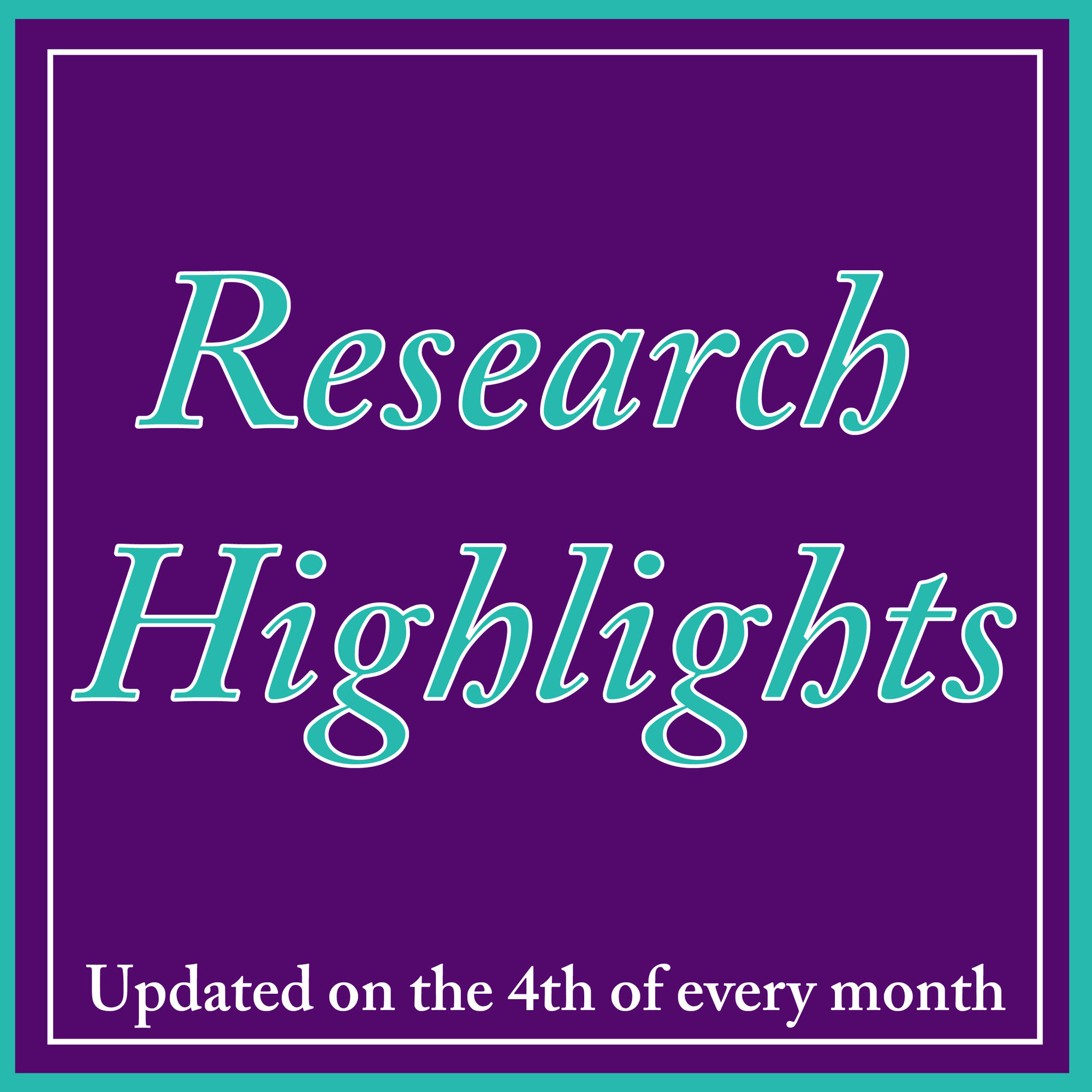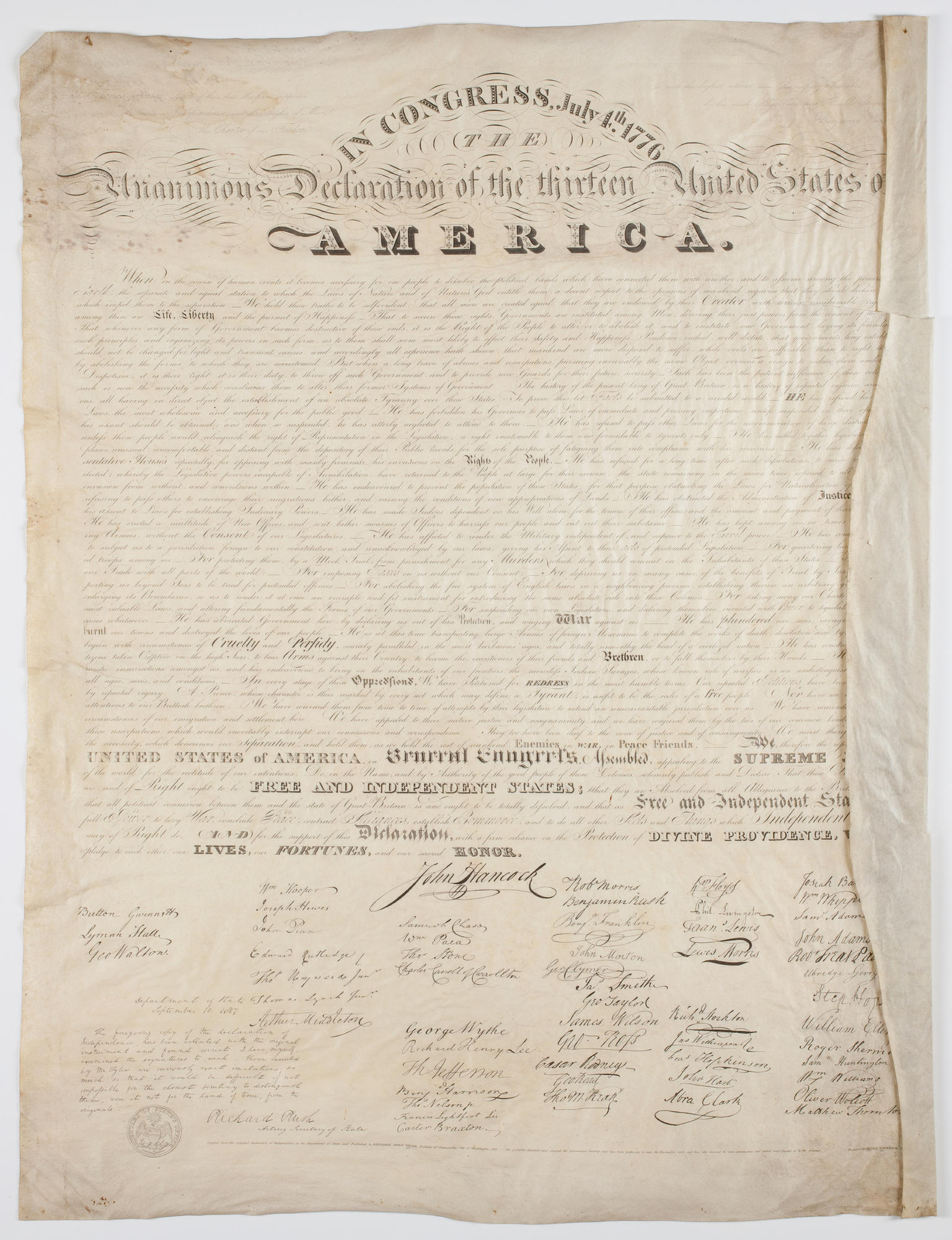 A few of John Adams' cousins are well-known; his first cousin Samuel, for example, or his wife Abigail (a third cousin). But did you know Adams discovered another cousin through a copy of the Declaration of Independence? On May 16, 1818, Benjamin Owen Tyler sent “an elegant copy of the Declaration of American Independence” to, among others, John Adams. On May 24th, Adams responded. It wasn’t the elegant penmanship that caught his eye, or an appreciation of Tyler producing an affordable copy of that text to which he had affixed his name forty two years earlier. It was the name “Benjamin Owen Tyler”. In this month’s Research Highlight, we explore the odd story of the familial connection brought to light by Tyler’s Declaration of Independence.
A few of John Adams' cousins are well-known; his first cousin Samuel, for example, or his wife Abigail (a third cousin). But did you know Adams discovered another cousin through a copy of the Declaration of Independence? On May 16, 1818, Benjamin Owen Tyler sent “an elegant copy of the Declaration of American Independence” to, among others, John Adams. On May 24th, Adams responded. It wasn’t the elegant penmanship that caught his eye, or an appreciation of Tyler producing an affordable copy of that text to which he had affixed his name forty two years earlier. It was the name “Benjamin Owen Tyler”. In this month’s Research Highlight, we explore the odd story of the familial connection brought to light by Tyler’s Declaration of Independence.
In 1818, after several years of work, 28-year-old Benjamin Owen Tyler produced the first engraving of the Declaration of Independence to include facsimiles of the 56 signatures. Tyler’s subscription book is in the Albert H. Small Declaration of Independence Collection at the University of Virginia Library, and it includes a slew of recognizable names among more than 1000 subscribers: James Madison, John Quincy Adams, John Marshall, Henry Clay, and Thomas Jefferson, “Patron of the Arts, the firm supporter of American Independence, and the Rights of Man,” to whom Tyler’s engraving is dedicated. Even though 82-year-old signer John Adams didn’t subscribe, Tyler sent him a copy of his engraving (according to William P. Gardner, he sent two, one on parchment and one on paper).

Here is Tyler’s letter of May 16th, introducing himself and his copy of the Declaration to Adams.
Tyler begins by praising Adams as a founder of the nation: “I have executed and published an elegant copy of the Declaration of American Independence, being the first and only copy ever published with facsimiles of the signatures of that ever venerated band of patriots who signed it, among whom you Sir were the foremost, and as your Illustrious compatriot Thomas Jefferson expressed in a letter to a gentleman in this city, “the pillar of its support on the floor of congress” For the glorious manner in which you distinguished yourself on that interesting occasion, the American people your grateful countrymen, have been pleased to elevate you to the highest and most dignified station in the power of a free people to confer. A gracious Providence, has been pleased to preserve your valuable life, to behold your utmost wishes realized, that of seeing your native country free, Independent and happy, and our Government established on a foundation which must well elevate her to the highest rank and respect among the nations of the earth. The very name of those Heroes, Statesman, and patriots, who achieved our Independence, will animate and nerve the arm of future generations to defend and protect those dear-bought rights, and liberties, we now enjoy. The most sanguine heroes of the revolution could not have anticipated a result so glorious that in 40 years after the Declaration of American Independence was announced to the world, that the United States of America, would have become one of the greatest and most flourishing nations on earth, and the only assylum for the oppress’d.”
Tyler then describes his copy of the Declaration: “The copy I have published is plain, and the same size of the original and is afforded at a price which, almost every American can have it in his power possess a correct copy of the charter of his freedom—combining an elegant specimen of American penmanship and engraving, with the most interesting subject that ever excited the attention and admiration of the political world.”
He saves the most intriguing detail for last: “My Grandfather (a native American) now more than 90 years old once had the honor of your acquaintance, and assisted with four of his sons, (among whom my father was one) in gaining the liberty, and happiness which is now sought by the oppresse’d of all nations.”
Adams’ short response on May 24, 1818 compliments Tyler’s work before quickly moving on to genealogical questions: “Your name Sir, “Benjamin Owen Tyler” has affected me more than your declaration of Independence… My Fathers Oldest Sister was married to Mr Benjamin Owen. There [sic] Second Daughter Ruth was married to Mr Tyler of Uxbridge. These circumstances Amount to a probable if not a violent presumption that you are a Son or Grandson of that Match. It would give me pleasure to know that any relation of mine possessed so much ingenuity and such a perfect Mastership of the Pen.”
It took Tyler a few weeks to respond, though when he did, he chose an auspicious day: July 4th. In his letter, he thanks Adams for the kind words, and then describes his lineage: “The sentiments expressed respecting my name, and my ancestors has affected me much. My Grandmothers name was Ruth Own [sic] and after her father I was named. I have frequently heard her say that she has often had the pleasure of nursing while an infant one of the fathers of American Liberty—and the honor of rocking in the cradle the President of the United States. My Grandfather lost all his property during the Revolutionary war and has ever since lived with my father, who is his oldest son. My mother died when I was about nine years of age, and left a sister and three brothers of whom I am the oldest, being now but 28 years of age. My father did not marry again for eight years during that time my grandmother was a kind and good mother [to] us, and I can hardly suppress the starting tear when I reflect on her anxious care and kindness to us. But the Almighty was pleased to take her to himself eight years next August. She died beloved and lamented by all who knew her and her loss to us was irreparable, but we have every reason to believe that she is now enjoying the fruits of a christian life with the saints in heaven. There was only one month and two days odds between her age and my grandfather, and they lived together sixty four years, had fifteen children—and twelve of them were living a year ago. My father removed from Northampton Mass. 12 years ago to Wilmington Vermont where he now resides, my good old grandfather lives with him and is ninety two years old. My oldest brother (who lives with them), is now here with me he left home about three weeks since, my grandfather was then remarkable well and smart for a man of his age—and has for many years enjoyed better health than my father who is nearly seventy—I hardly know which I should regret the loss of most my father or Grandfather. I have ever been so happy as to be his favorite and I believe thinks as much of m[e] as he does any of his own children. I married in N.y. three years next November and removed to the city of Washington about 18 months since where my family now are. I have only one child, a most interesting little daughter about twenty months old…” Tyler and Adams were indeed related through Ruth Owen Tyler, and the Tyler family story was that she had nursed and rocked the future signer and president.
On July 19th, Adams responds with the caveat, “I cannot write long letters.” before extending an invitation to Tyler: “When you visit Boston do not forget Quincy the residence of your Ancestors for almost 200 years. Your Grandmother had an elder sister who Married Mr Joshua Bracket and a brother Benjamin. I should be glad to know something of all these for I believe it is twenty years since I have any thing of any of them When you come to Quincy call upon me and I will direct you to see the seats and tombs of your ancestors.” Adams concludes his letter with, “the esteem of your Cousin...”
To recap, Ruth Owen Tyler’s mother, Hannah, was Benjamin Owen Tyler’s great-grandmother and John Adams’ aunt, which made Tyler and Adams first cousins twice removed. Here is a guide to the genealogy, with Adam's cousin Samuel included for good measure.
Correction (August 2019): A previous version of this blog post erroneously indicated that Adams and Tyler were first cousins once removed.
So Tyler's engraving was not just the first of its kind, but it also led to a reconnection of family members. Another interesting familial link between John Adams and a facsimile of the Declaration of Independence? In 1820, his son, John Quincy Adams, commissioned William J. Stone to create a facsimile - not just of the signatures, but of the text as well.
For more on Tyler's genealogy, see Willard I. Tyler Brigham, The Tyler Genealogy: The Descendants of Job Tyler, of Andover, Massachusetts, 1619-1700, volume I (1912).
By Emily Sneff


